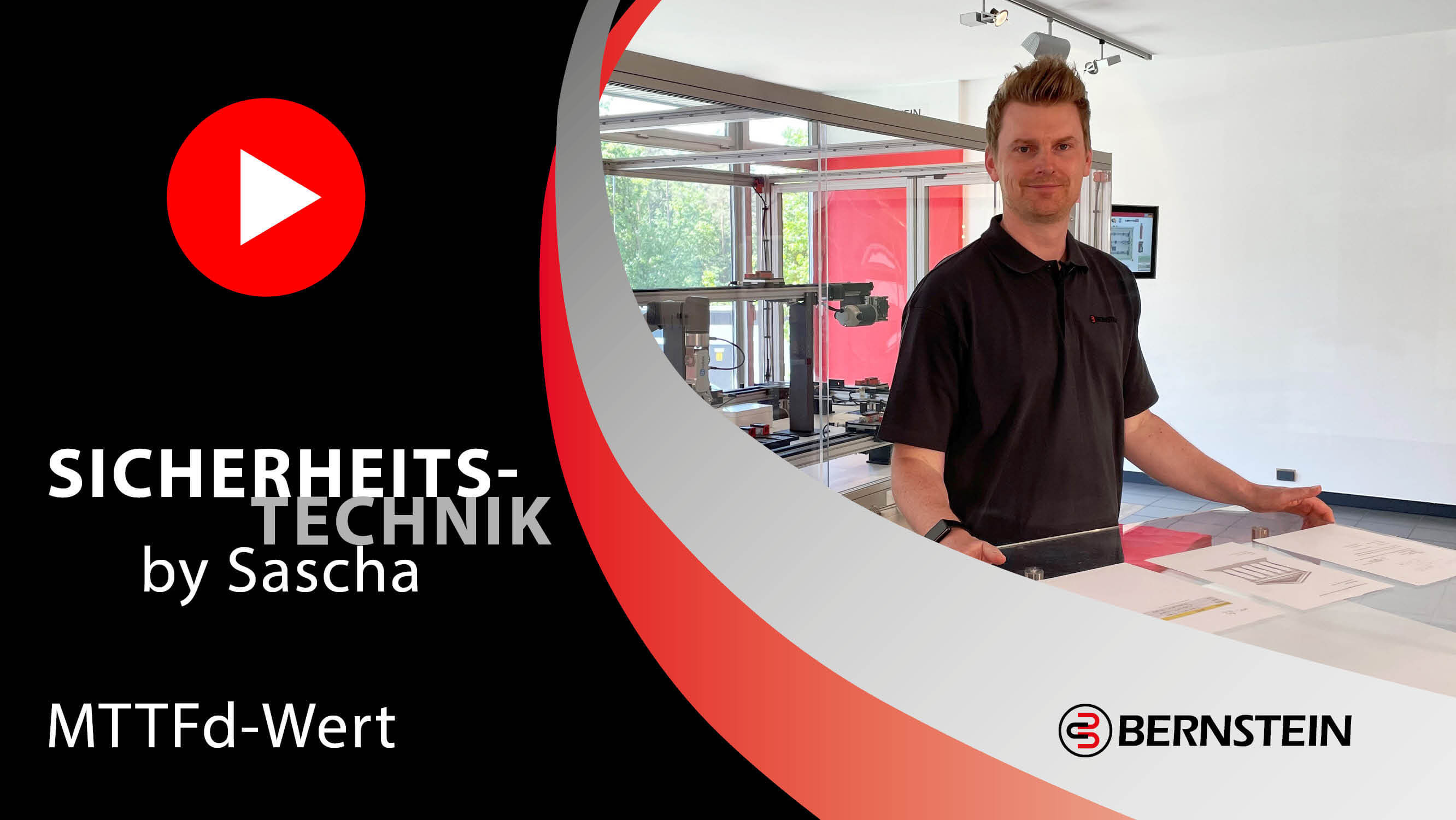Can standard inductive sensors be used in safety technology?
Yes, provided that:
- Risk analysis was performed
- The sensors meet the product standard according to EN IEC 60947-5-2
- MTTF values for the components are available
- Proven safety principles have been applied according to EN ISO 13849-2
- Compliance with the required performance level (PLr) is demonstrated
In mechanical and plant engineering, the EN ISO 13849 or EN IEC 62061 standards very often apply to safe control technology.
In addition to qualitative measures with corresponding structures and failure-preventing measures, both standards also expect quantitative proof of the safety functions.
In order to be able to provide this proof, the failure rates or their reciprocal value, the so-called MTTF (Mean Time To Failure) or MTTFd (Mean Time To Failure dangerous), of each assembly are usually required.
In the following video (german version), our colleague Sascha explains this latter value in more detail:
In our white paper on this topic, we explain the individual steps of this procedure in more detail. In addition, you will also find a detailed application example for better illustration.
You will also find a list of all inductive sensors from BERNSTEIN AG that can be used as described in this white paper.
Download Whitepaper
- PDF, 2 MB
- WHITEPAPER (GERMAN)Standard inductive sensors in safety applicationsPDF, 2 MB

